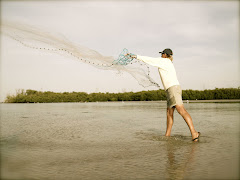 Walking through the entrance to Naples Botanical Garden is a treat for the senses. There's really no way to even begin to describe its scope. For some reason I pictured something smaller like the gardens of my youth in Clearwater and at our current home in Fort Myers. Was I ever wrong.
Walking through the entrance to Naples Botanical Garden is a treat for the senses. There's really no way to even begin to describe its scope. For some reason I pictured something smaller like the gardens of my youth in Clearwater and at our current home in Fort Myers. Was I ever wrong.
The Garden grounds cover 170 acres that feature plants from the subtropics. This includes places like Brazil, the Caribbean, Southeast Asia and Florida. Everything from the wetlands and swamps to the dry and arid is represented and it's laid out in a way that lets you feel as if you are time traveling from one section of the world to another. There are huge water gardens with beautiful lilies and trickling waterfalls and large expanses of open lowlands with sawgrass. There are even rice patties planted and cultivated in the Asian area.
The Naples Botanical Garden was originally founded in 1993, closed for expansion in June of 2007 and reopened to the public in November of 2009. Expansion has continued and the result is a world class, award wining garden.
My visit was made possible as part of the Florida Outdoor Writers Association annual conference. It's held each year in a different area of Florida to help introduce writers to the featured location. During a group tour I was able to speak to executive director Brian Holley and came away with these interesting tidbits.
- Seventy acres of invasive melaleuca and Brazilian pepper were removed and turned into thousands of yards of mulch during the reconstruction.
- Over a 1/4 of a million yards of dirt was moved around the site to make the highlands and lowlands.
- During construction thousands of native plants were saved to be planted later.
- There are currently over 7500 different kinds of plants.
- There are currently 1000 plus orchids.
 The pride in Brian's voice was evident, as it should be. This was a massive undertaking that you'll have to see to believe.
The pride in Brian's voice was evident, as it should be. This was a massive undertaking that you'll have to see to believe.
I walked the shell, stone and dirt paths though a good part of the area, but time was pressing and I soon realized that this is more than a quick tourist stop along US 41. I believe you could plan an entire morning or day at the Naples Botanical Garden and still not see it all.
The Garden is open from 9am to 5pm daily. Admission is $12.95 for adults and $7.95 for children 4-14 years old. 3 and under are free. There are also memberships available and members admission is free. Each Tuesday "Early Bird" hours are offered from 8am until 12pm. This gives amateur photographers and painters some quiet time and early morning light.
For more information go to www.naplesgarden.org
Capt. Rob Modys
SoulMate Charters







